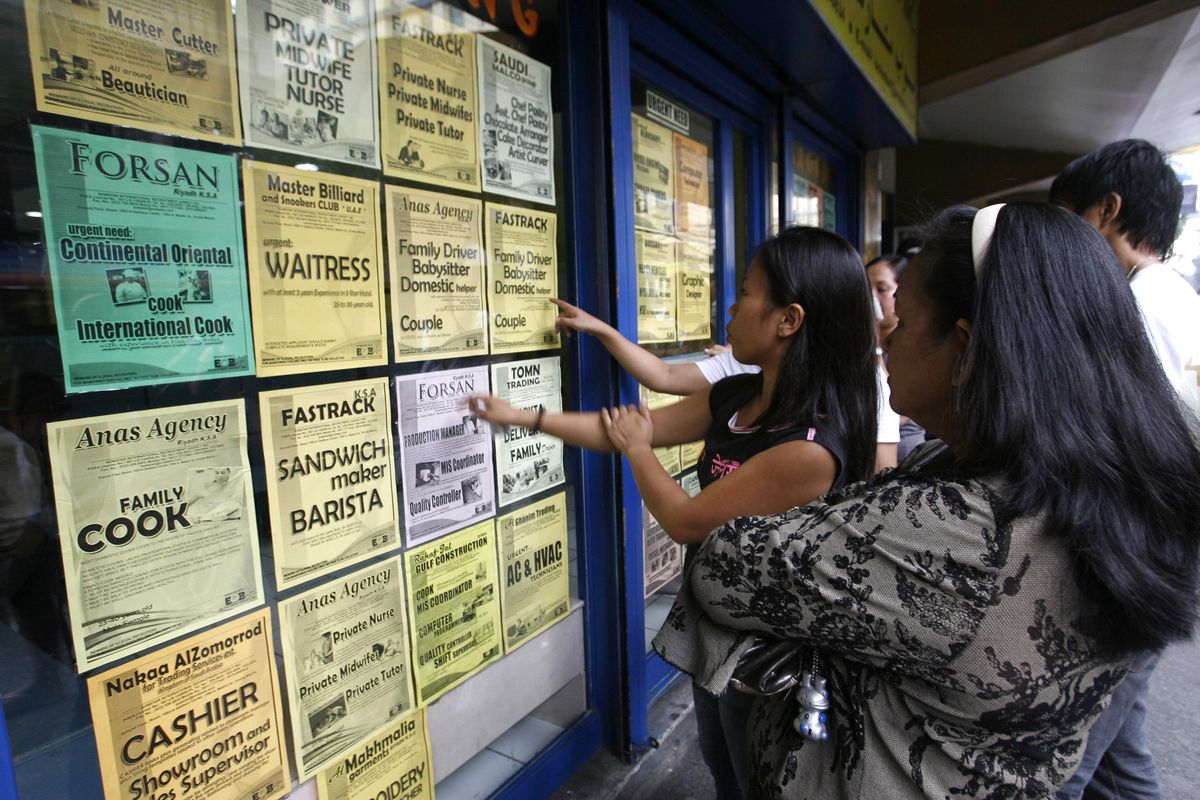The Philippines: From remittances to migrant worker superpower?
Being an Overseas Filipino Worker is nothing to sneeze at. When OFWs, as they're popularly known, go home for Christmas carrying huge cardboard boxes of gifts, they have a dedicated customs line and huge billboards thanking them for doing such a good job. Why? Because the remittances they send make up almost 10% of GDP. What's more, the Philippine labor diaspora is among the world’s biggest at 10% of the population — and a prized voting bloc. That’s why President Ferdinand Marcos Jr. spent almost as much time visiting OFWs in the US and the Gulf as he did on the domestic campaign trail. It paid off: Marcos killed it with OFWs, who helped him last May win a plurality of the vote for the first time since his authoritarian dad was in charge. Now, Marcos Jr. wants OFWs to play an even bigger role in his administration. For one thing, he’s asking them to go beyond remittances and actually invest in crucial business sectors such as tourism. For another, Marcos thinks the Philippines can punch above its tiny diplomatic weight by leveraging the power of its huge expat workforce to achieve political goals like trade deals. If a pandemic-era deployment ban on Filipino nurses worsened a global shortage, imagine what would happen to the shipping industry if Manila called back a quarter of the world's seafarers.
How pandemic and inflation impacted remittances to Central America
Lockdowns in the US had a disruptive effect on many Latin American countries that rely on remittances from the US to keep their economies afloat. Border closures and a stagnant US economy in the first half of 2020 caused remittances to drop, with outflows to Mexico, Guatemala, and Honduras contracting (year on year) in April 2020 by 3%, 20%, and 28% respectively. That trend reversed course in the second half of 2020 as the US entered the “we have to learn to live with it” stage of the pandemic. Remittances strengthened further in 2021 as the US economy came roaring back. Surging demand coupled with the Biden administration’s $1.9 trillion stimulus package led to record levels of remittances to Latin American countries, where pandemic-related economic disruptions remained rampant. Remittances to Mexico grew 27%, while Guatemalan migrants sent 35% more back. Payments to Honduras and El Salvador, meanwhile, grew 26%. We’ll be watching to see whether these outflows recede as the US Federal Reserve doubles down on efforts to rein in soaring US inflation. What’s more, inflation in the receiving countries – the annual rate in August was at 8.7% in Mexico, 10.4% in Honduras, and 8.4% in Guatemala – means that whatever is sent home will be worth less.








